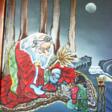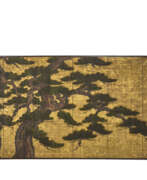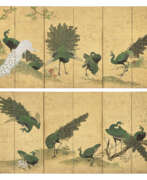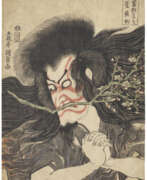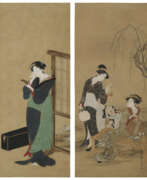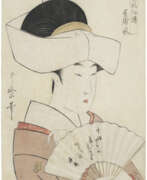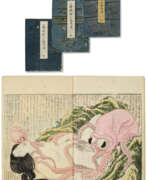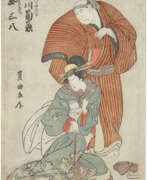Edo period
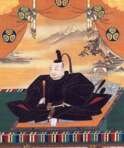
Edo period
The Edo period, a pivotal historical era in Japan lasting from 1603 to 1868, is celebrated for its profound impact on Japanese culture, art, and society. This period, named after Edo (now Tokyo), the then-capital, was marked by the rule of the Tokugawa shogunate, establishing a period of peace and stability after years of conflict.
The Edo era is renowned for its flourishing arts and culture. This period saw the emergence of distinctive Japanese art forms, including Ukiyo-e, a genre of woodblock prints and paintings that depicted everyday life, landscapes, and beautiful women. Ukiyo-e, which means "pictures of the floating world," was a medium through which artists captured the vibrancy of Edo’s urban culture. Notable Ukiyo-e artists like Hishikawa Moronobu and Itō Jakuchū left indelible marks on Japanese art. Their works, such as Moronobu's "Two Lovers" and Jakuchū's "Birds, Animals, and Flowering Plants in Imaginary Scene," are significant cultural treasures, with some pieces displayed in museums like The Metropolitan Museum of Art and Shizuoka Prefectural Museum of Art.
The period was also a time of significant social restructuring. The Tokugawa shogunate implemented the Sankin Kotai system, which required daimyos to alternate their residence between their domains and Edo. This policy not only consolidated the shogunate’s power but also contributed to the urban development of Edo, turning it into one of the world's largest cities of that time.
Interestingly, the isolationist policies of the shogunate during this period, known as Sakoku, led to limited foreign influence, allowing Japanese culture to develop independently. However, the arrival of Commodore Perry from the United States in 1853, demanding Japan to open up for trade, marked the beginning of the end for the Edo period and the start of Japan's integration into the global community.
Today, the Edo period is viewed through a lens of appreciation for its contribution to the unique evolution of Japanese culture. Its legacy continues to influence modern Japan and captivates the imagination of art collectors and history enthusiasts worldwide.
For those passionate about the art and antiques of this remarkable era, signing up for updates on new product sales and auction events related to the Edo period can enrich your collection and knowledge. Stay connected with the past by joining our community of enthusiasts today.
| Country: | Asia, Japan |
|---|---|
| Start of the period: | 1603 |
| End of the period: | 1868 |
